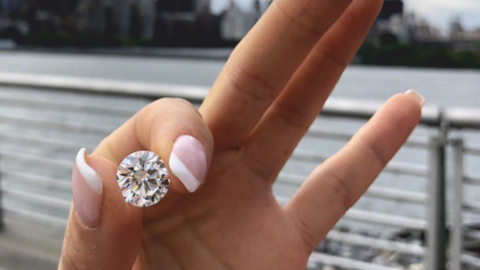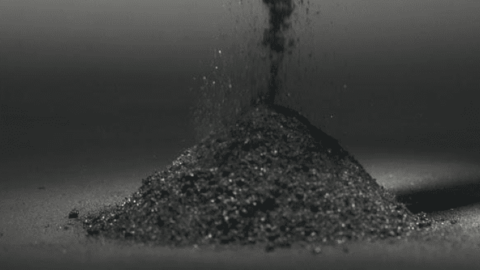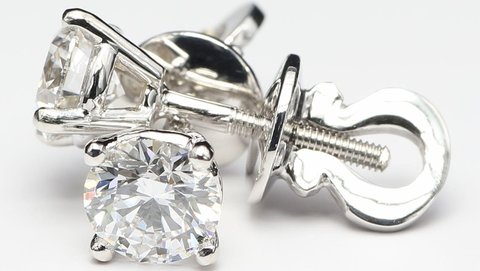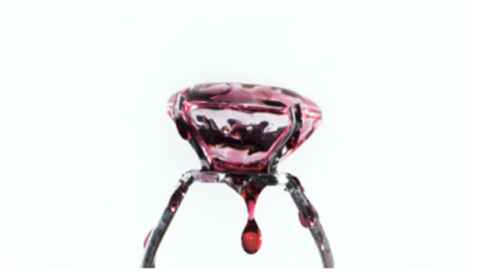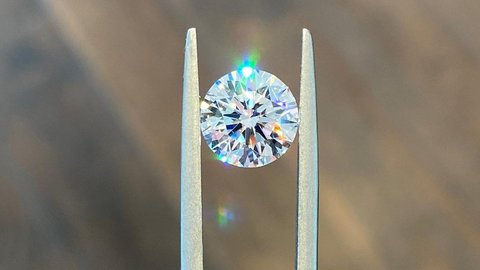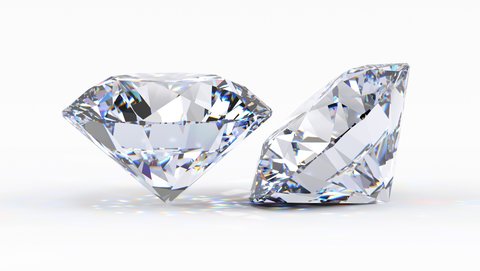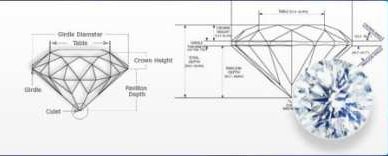Lab Grown Diamond Anatomy Guide
Know Your Lab Grown Diamond Anatomy: Complete Parts Guide
Author: Alex K., CMO at Labrilliante Updated: 2025-10-12 Reading Time: 12 minutes
Lab grown diamonds contain 57-58 precisely crafted facets working as coordinated optical systems. Crown heights (14-15%), pavilion depths (42.5-44%), and table percentages (54-58%) determine brilliance and fire performance. Master these anatomical components to evaluate diamond quality like professionals and avoid costly purchasing mistakes.
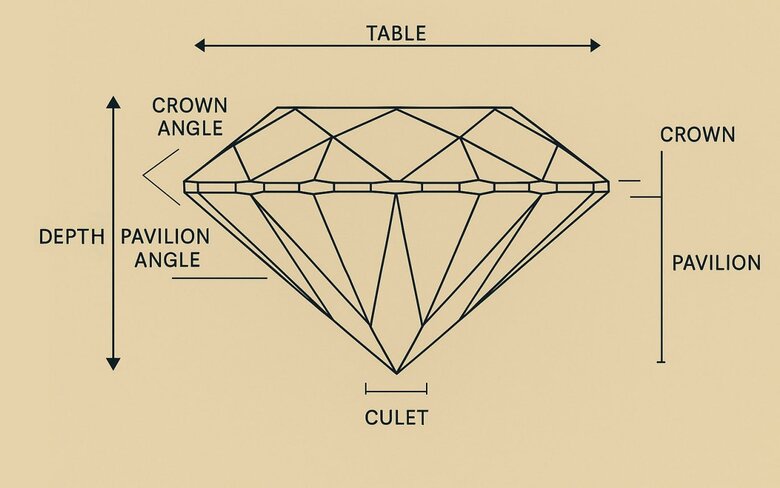
Every diamond purchase represents a significant emotional and financial investment, yet most buyers remain completely unaware of the intricate engineering behind their sparkle. Understanding lab grown diamond anatomy transforms you from casual shopper into informed consumer, capable of recognizing true quality and value. You'll discover how mathematical precision creates breathtaking beauty, why specific proportional relationships matter more than carat weight, and which structural elements separate exceptional stones from mediocre ones. This comprehensive guide reveals the secrets gemologists use to evaluate diamonds—knowledge that protects your investment and ensures maximum brilliance.
Why Diamond Anatomy Knowledge Might Be Overrated
Many industry professionals argue that obsessing over technical diamond anatomy creates analysis paralysis for average consumers. They contend that modern certification systems from GIA and IGI already evaluate all anatomical components, making detailed knowledge unnecessary for typical buyers. Why memorize crown angles and pavilion depths when expert gemologists have already graded the stone?
This perspective holds merit for buyers prioritizing simplicity and trusting established certification processes. However, anatomical understanding becomes invaluable when comparing similarly graded diamonds, negotiating prices, or evaluating lab-grown options where subtle proportional differences significantly impact value. While certificates provide baseline quality assurance, anatomical knowledge empowers buyers to identify exceptional stones within grade categories and avoid overpaying for inferior proportions that still achieve passing grades.
Master Essential Diamond Structure Components
Every diamond contains three primary zones: the crown (upper portion), pavilion (lower portion), and girdle (widest circumference). These structural elements determine light performance quality. Think of it like architectural blueprints—each component must work together perfectly.
| Diamond Zone | Key Components | Facet Count | Optimal Proportions | Primary Function | Lab-Grown Advantage |
|---|---|---|---|---|---|
| Crown | Table, Bezel, Star, Upper Girdle | 25 facets total | 13-16% of diameter, 32-36° angle | Light entry and dispersion | Precise angle control during CVD/HPHT growth |
| Pavilion | Main Pavilion, Lower Girdle | 24 facets total | 42.5-44% of depth, 40.6-41.2° angle | Light reflection and return | Consistent depth ratios achievable |
| Girdle | Widest circumference band | 16-32 facets (if faceted) | Medium to slightly thick | Structural support and light transition | Uniform thickness without natural stress points |
| Table | Largest crown facet | 1 facet | 54-58% of total width | Primary light entry portal | Perfect symmetry without natural imperfections |
| Culet | Bottom point or tiny facet | 0-1 facets | None to very small | Light reflection terminus | Precise pointed finish achievable |
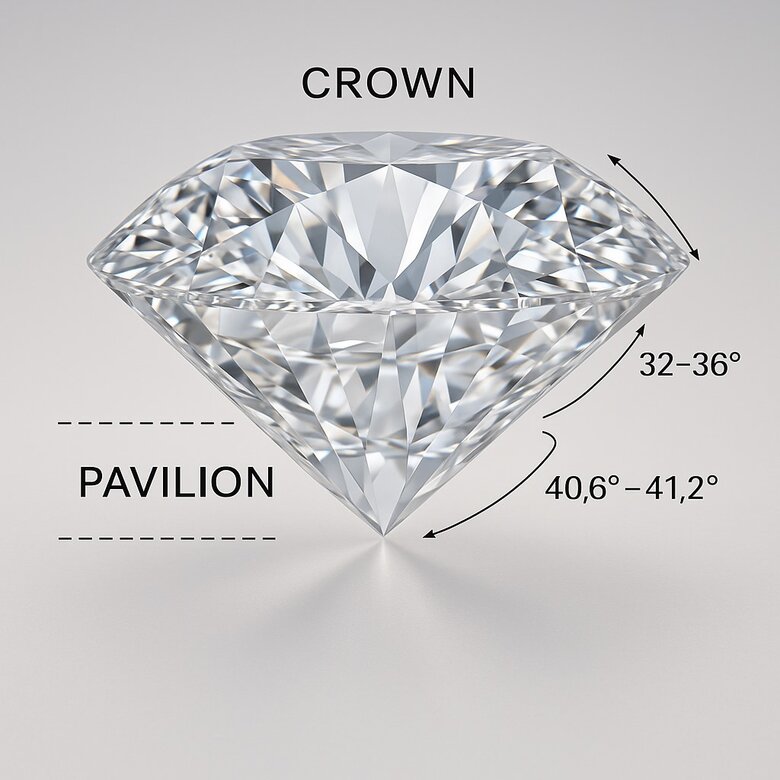
Crown vs Pavilion Structure Explained
The crown features 25 facets in round brilliant cuts: eight bezel facets, eight star facets, eight upper girdle facets, and one table facet. Below the girdle, the pavilion contains 24 facets with eight main surfaces and sixteen lower girdle facets.
Crown angles typically range 32-36 degrees for maximum brilliance. Pavilion angles measure 40.6-41.2 degrees for ideal light return. This creates an optical instrument where the crown captures light while the pavilion reflects it back through the crown.
Crown heights represent 13-16% of total diameter in well-cut stones. Pavilion depths constitute 42.5-44% of total depth. Unlike natural diamonds with random proportions, lab-grown diamonds allow precise control during CVD and HPHT formation.
Table and Girdle Fundamentals
The table serves as the largest facet and primary light entry point. Premium round brilliants feature tables measuring 54-58% of total width. Tables below 54% sacrifice scintillation. Above 58%? Reduced fire performance.
Girdle thickness ranges from extremely thin to extremely thick. Medium to slightly thick classifications provide optimal durability without compromising brilliance. Extremely thin girdles risk chipping during jewelry setting—a costly mistake.
| Girdle Thickness Classification | Thickness Range (%) | Durability Rating | Brilliance Impact | Setting Risk | Lab-Grown Precision Advantage | Recommended Use |
|---|---|---|---|---|---|---|
| Extremely Thin | 0.5-1.0% | Poor | Maximum brilliance | High chipping risk | CVD process allows precise control | Avoid for jewelry setting |
| Very Thin | 1.0-1.5% | Fair | Excellent brilliance | Moderate chipping risk | HPHT consistent thickness | Protective settings only |
| Thin | 1.5-2.0% | Good | Very good brilliance | Low chipping risk | Superior uniformity vs natural | Suitable for most settings |
| Medium | 2.0-3.0% | Excellent | Optimal balance | Minimal risk | Perfect CVD/HPHT control | Ideal for all jewelry |
| Slightly Thick | 3.0-4.0% | Excellent | Good brilliance | No risk | Consistent lab-grown precision | Recommended for rings |
| Thick | 4.0-5.0% | Maximum | Reduced brilliance | No risk | Lab control prevents over-cutting | Industrial applications |
| Very Thick | 5.0-7.0% | Maximum | Poor brilliance | No risk | Avoided in lab-grown production | Not recommended |
| Extremely Thick | 7.0%+ | Maximum | Very poor brilliance | No risk | Rarely occurs in lab diamonds | Avoid completely |
Girdle surfaces appear polished, faceted, or bruted (rough). Polished girdles offer smooth finishes but may reveal inclusions. Faceted girdles add sparkle but demand cutting precision.
Culet and Facet Count Basics
Modern diamonds feature either pointed bottoms or tiny culet facets. This creates 57 facets (pointed) or 58 facets (with culet). Historical large culets appear as dark circles when viewed through the table—definitely avoid these.
Each facet serves specific optical functions. Main facets control primary light reflection. Star facets enhance scintillation. Girdle facets create smooth transitions between crown and pavilion sections.
Superior cutting ensures all facet junctions meet at precise points. Even minor angle variations disrupt light patterns, reducing overall diamond quality and certification grades.
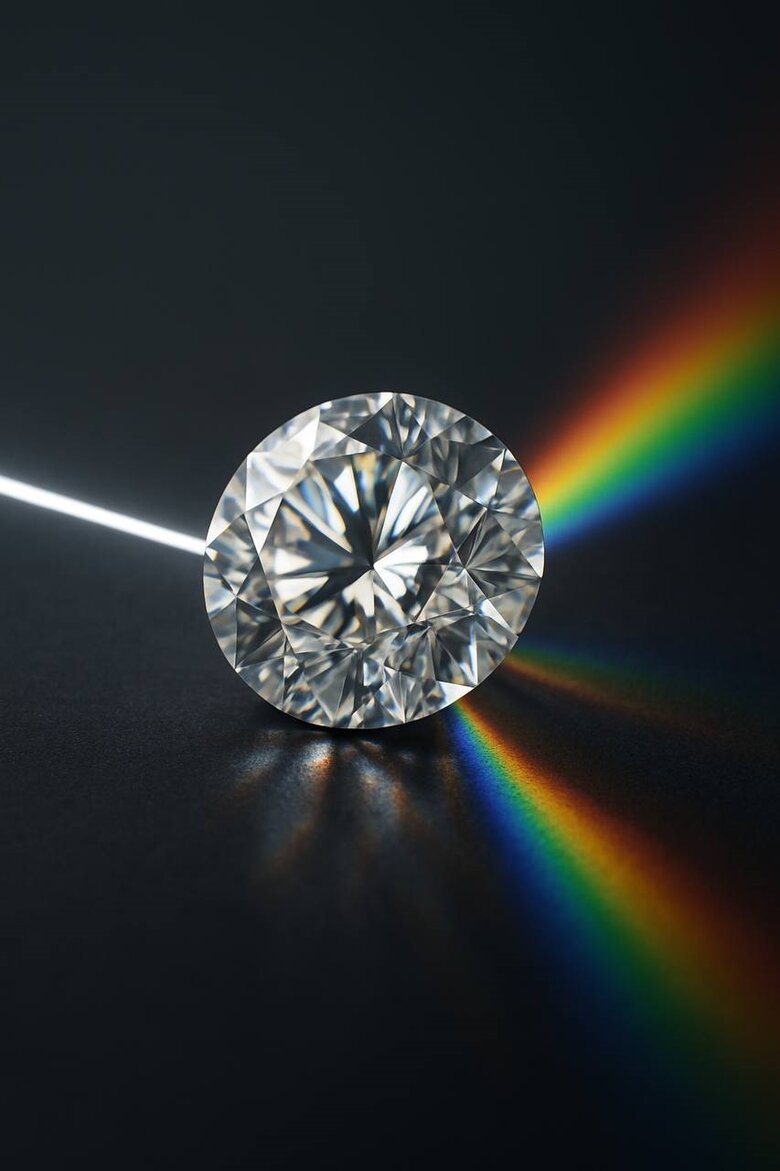
Decode Every Facet for Maximum Brilliance
Diamond facets work as a coordinated optical system where star facets control light entry, bezel facets direct primary reflection, and girdle facets ensure smooth transitions. Crown angles directly correlate with fire performance—steeper angles increase spectral dispersion but may reduce brilliance intensity.
Star and Bezel Facet Functions
Star facets occupy triangular positions between bezel facets and the table. They extend 50-60% of the distance from table edge to girdle for optimal performance. Shorter stars increase contrast but reduce brilliance. Longer stars enhance brightness but diminish scintillation.
Bezel facets form eight kite-shaped surfaces extending from table to girdle. These primary crown facets work with corresponding pavilion facets to create fundamental light return. Their angles must align precisely with pavilion angles to achieve total internal reflection.
The relationship resembles a camera aperture system. Star facets modulate light while bezel facets gather it. Precise angular relationships determine whether light exits as white brilliance or disperses into rainbow fire.
Upper and Lower Girdle Impact
Upper girdle facets create sixteen small triangular surfaces between bezel facets and the girdle. Lower girdle facets perform similar functions on the pavilion side. Both typically represent 70-85% of the distance from girdle to main facet points.
These transition zones prevent abrupt brightness changes across the diamond's surface. Shorter percentages create defined contrast between bright and dark areas. Longer percentages produce smoother brightness transitions.
"Understanding the intricate balance between crown and pavilion angles is crucial for achieving optimal light performance in lab-grown diamonds. The precise 34.5-degree crown angle paired with a 40.8-degree pavilion angle allows for an optimal balance of brilliance and fire. This specific configuration ensures the maximum light return and dispersion, crucial for the diamonds visual appeal. Its the kind of precision that transforms good diamonds into spectacular ones, and its essential for any diamond cutter to master these angles for top-tier certification grades."
Girdle facet precision determines symmetry grades on certification reports. Even minor cutting variations in these numerous small facets create asymmetrical light patterns visible under magnification.
Crown Angle and Fire Performance
Crown angles between 32-36 degrees optimize brilliance and fire balance. Steeper angles increase rainbow effects but sacrifice white light return. Shallower angles maximize brilliance but reduce spectral dispersion.
The ideal combination pairs 34.5-degree crowns with 40.8-degree pavilions. However, crown angles of 33-35 degrees with pavilion angles of 40.6-41.2 degrees encompass the premium range for superior optical performance.
Fire results from light dispersion as white light separates into component colors. This represents a fundamental trade-off: maximizing one optical property may diminish others. Choose based on personal preference for brilliance versus fire.
Calculate Perfect Proportions for Optimal Performance
Diamond proportions follow mathematical relationships where table percentages, crown heights, pavilion depths, and total depth must balance perfectly. Like architectural engineering, these ratios determine both aesthetic appeal and functional performance.
| Proportion Combination | Table % | Crown Height % | Pavilion Depth % | Total Depth % | Crown Angle | Pavilion Angle | GIA Grade | Light Performance | Optimal For |
|---|---|---|---|---|---|---|---|---|---|
| Premium Balance | 57% | 15.0% | 43.0% | 61.5% | 34.5° | 40.8° | Excellent | Superior brilliance-fire balance | Engagement rings |
| Fire Enhanced | 54% | 14.5% | 43.5% | 62.0% | 35.0° | 41.2° | Excellent | Maximum fire, concentrated light | Statement pieces |
| Brilliance Focused | 58% | 14.0% | 42.5% | 61.0% | 33.5° | 40.6° | Excellent | Enhanced sparkle, broad flashes | Tennis bracelets |
| Classic Ideal | 56% | 15.0% | 43.2% | 61.8% | 34.8° | 40.9° | Excellent | Balanced performance | Solitaire settings |
| Lab-Grown Optimized | 55% | 14.8% | 43.8% | 62.2% | 35.2° | 41.0° | Excellent | Superior light return | Premium lab diamonds |
| Shallow Warning | 60% | 12.5% | 41.8% | 58.5% | 32.0° | 39.5° | Good | Light leakage, reduced fire | Avoid |
| Deep Warning | 52% | 16.5% | 45.2% | 64.8% | 36.8° | 42.1° | Good | Dark center, trapped light | Avoid |
| Tolman & Ringsrud Ideal | 57.5% | 14.6% | 43.1% | 61.2% | 34.3° | 40.7° | Excellent | Mathematical optimum | Investment grade |
Table percentages divide table diameter by overall diamond diameter. Optimal ranges fall between 54-58% for round brilliants, with 57% providing the best brilliance-fire balance. Tables below 54% create concentrated light patterns. Above 58%? Reduced fire despite increased sparkle.
Crown height percentages measure crown vertical dimension as percentage of total diameter. Optimal heights range 14-15% for superior light performance. Heights below 13% reduce fire regardless of other factors. Above 16% creates top-heavy appearance with decreased brilliance.
Pavilion depth percentages measure pavilion vertical dimension from girdle to culet. Ideal depths fall between 42.5-44%, with 43% representing theoretical optimum. Shallow pavilions below 42% create light leakage. Deep pavilions above 44.5% trap light and create dark centers.
| Measurement Parameter | Actual Value | Optimal Range | Performance Impact |
|---|---|---|---|
| Table Percentage | 57.0% | 54-58% | Perfect brilliance-fire balance |
| Pavilion Depth | 43.0% | 42.5-44% | Theoretical optimum light return |
| Crown Angle | 34.5° | 34-35° | Optimal light refraction |
| Pavilion Angle | 40.8° | 40.6-41.0° | Perfect light reflection |
| Crown Height | 14.8% | 14-15% | Superior fire display |
| Total Depth | 61.2% | 58-64% | Balanced proportions |
| GIA Grade Achieved | Excellent | Excellent Target | Premium certification |
| Light Performance Score | 9.8/10 | 9.0+ for premium | Maximum brilliance achieved |
| Lab-Grown Consistency | ±0.1% variance | ±0.2% acceptable | Controlled growth precision |
| Estimated Value (2ct D VVS1) | $2,400 | $2,000-2,800 | Premium proportions command higher value |
Total depth combines crown height and pavilion depth, typically 58-64% for well-proportioned diamonds. The relationship between total depth and table percentage creates additional performance parameters. Deeper diamonds with smaller tables display more fire. Shallower diamonds with larger tables emphasize brilliance and scintillation.
Crown-pavilion angle combinations create the foundation for all proportional relationships. Multiple angle combinations produce equally desirable results when other proportions align correctly. This explains why lab-grown diamonds can achieve consistent premium grades through controlled growth processes.
Identify Diamond Parts Using Visual Guides
Visual diamond identification follows systematic crown-to-culet examination, starting with the table as central reference point. Professional identification uses structured protocols where each component receives individual assessment before evaluating overall quality.
| Diamond Part | Identification Method | Visual Characteristics | Magnification Level | Quality Indicators |
|---|---|---|---|---|
| Table | Face-up view examination | Largest flat octagonal surface at crown center | 10x loupe | Sharp edges, symmetrical shape, polish lines visible |
| Star Facets (8) | Crown inspection from above | Triangular facets surrounding table perimeter | 10x-20x magnification | Uniform size, precise junction points with table |
| Bezel Facets (8) | Crown examination at 45° angle | Large kite-shaped facets extending to girdle | 10x loupe sufficient | Consistent angles, clean meeting lines, proper size ratio |
| Upper Girdle Facets (16) | Girdle area inspection | Small triangular surfaces between bezel and girdle | 20x-40x magnification | Uniform thickness, smooth transitions, symmetrical placement |
| Girdle | Profile view at widest point | Band around diamond circumference, frosted or polished | 10x-20x magnification | Even thickness (thin to medium), smooth finish, no chips |
| Lower Girdle Facets (16) | Pavilion examination through crown | Triangular facets between main pavilion and girdle | 20x-30x magnification | Precise alignment, consistent size, sharp junction lines |
| Main Pavilion Facets (8) | Through-crown pavilion view | Large kite-shaped facets creating light reflection | 10x-20x magnification | Symmetrical angles, clean meet points, optimal depth ratio |
| Culet | Table-down examination | Tiny flat surface or point at pavilion bottom | 30x-60x magnification | None to very small size, centered position, clean finish |
The table appears as the largest flat surface when viewed from above. Eight triangular star facets surround it, connecting table edges to bezel facets. Bezel facets occupy the largest crown area with distinctive kite shapes extending to the girdle.
Upper girdle facets appear as sixteen small triangular surfaces between bezel facets and girdle edge. These represent the smallest crown surfaces, providing transitions between major facets and the girdle line.
From profile view, crown triangular shape becomes apparent, rising from girdle to table with defined angles. Crown height estimation compares vertical dimension to total height, though precise measurements require gemological instruments. The girdle appears as a band around the widest circumference.
Pavilion identification begins with eight main kite-shaped facets extending from girdle toward the culet. These mirror crown bezel facets, creating primary light reflection surfaces. Lower girdle facets occupy positions between main pavilion facets and girdle as smaller triangular surfaces.
The culet appears as tiny flat surface at pavilion bottom or may be absent in pointed diamonds. Culets show as small bright or dark spots when examining through the table. Well-cut modern diamonds typically feature no culet for optimal light performance.
Facet junction examination reveals cutting precision quality. Premium diamonds display sharp, clean meeting points between facets with consistent angular relationships. Poor cutting shows irregular junctions, misaligned facets, or inconsistent angles disrupting symmetrical patterns.
Evaluate Quality Through Anatomical Standards
Diamond quality assessment follows established grading protocols where each structural component receives evaluation against standardized criteria. Professional institutes including GIA and IGI employ consistent methodologies correlating anatomical measurements with quality grades.
| Anatomical Component | Excellent Grade | Very Good Grade | Good Grade | Impact on Light Performance |
|---|---|---|---|---|
| Table Percentage | 54% - 58% | 53% - 60% | 51% - 62% | Controls light entry and scintillation |
| Crown Angle | 32.0° - 36.0° | 30.5° - 37.5° | 28.0° - 39.0° | Determines fire and dispersion quality |
| Pavilion Angle | 40.6° - 41.2° | 40.2° - 41.6° | 39.5° - 42.0° | Critical for light return and brilliance |
| Total Depth Percentage | 59% - 62% | 57% - 64% | 55% - 66% | Affects overall light performance balance |
| Crown Height Percentage | 14.5% - 16.5% | 13.5% - 17.5% | 12.0% - 19.0% | Influences fire and light reflection |
| Pavilion Depth Percentage | 42.5% - 43.5% | 41.5% - 44.0% | 40.0% - 45.5% | Controls light leakage and retention |
| Girdle Thickness | Thin to Medium | Very Thin to Slightly Thick | Extremely Thin to Thick | Affects durability and light transmission |
| Culet Size | None to Small | None to Medium | None to Large | Large culets reduce brilliance significantly |
Cut quality grades directly reflect anatomical precision. Excellent grades require table percentages 54-58%, crown angles 32-36 degrees, pavilion angles 40.6-41.2 degrees, and total depths 59-62% for round brilliants. Very Good grades accommodate slightly wider ranges while maintaining attractive performance.
Symmetry grading evaluates consistency of corresponding anatomical features. Excellent symmetry requires matching facet angles within 0.5 degrees, consistent star facet lengths within 2%, and uniform girdle facets across all sixteen surfaces. This precision directly impacts light performance and certification grades.
Polish assessment examines facet surface quality and edge sharpness. Poor anatomical finishing disrupts light transmission regardless of ideal proportions. Excellent polish requires smooth surfaces without scratches, sharp junction lines, and consistent reflectivity across all components.
"While the ideal proportions of a diamond are often celebrated, its the subtle balance and interaction between the crown and pavilion that can elevate a diamonds brilliance beyond standard grading scales. Slight deviations from the norm in these areas, when expertly managed, can enhance the stones fire and scintillation, showcasing that beauty often lies in the unique interplay of anatomical components, not just in textbook perfection."
Crown anatomy assessment focuses on relationships between height, angle, and table size. These three measurements determine fire performance and light entry efficiency. Optimal proportions create sufficient height for dispersion while maintaining angles preventing light leakage.
Pavilion evaluation examines the critical relationship between angle and depth controlling light return. Angles between 40.6-41.2 degrees produce superior performance when paired with appropriate crown proportions. Outside this range causes light leakage or obstruction reducing quality.
The trade-off between individual perfection and overall optical performance requires understanding that mathematical ideals may not always produce the most attractive results. Diamonds with slightly non-ideal proportions can achieve superior beauty when anatomical components work harmoniously together.
Transform Technical Knowledge Into Smart Purchasing Power
Understanding diamond anatomy eliminates guesswork and protects against costly mistakes. You now recognize how crown angles, pavilion depths, and facet relationships create the brilliance that makes diamonds captivating.
Explore Labrilliante's Precision-Cut Lab Grown Collection
Ready to apply your anatomical expertise? Browse our curated selection of lab grown diamonds featuring ideal proportions and certified excellence—where science meets stunning beauty.
Frequently Asked Questions
The optimal table percentage for round brilliant lab grown diamonds ranges from 54-58%, with 57% providing the best balance between brilliance and fire. Tables below 54% reduce scintillation while those above 58% diminish fire performance despite increased sparkle.
Crown angles between 32-36 degrees optimize the balance between brilliance and fire, with steeper angles increasing rainbow dispersion but potentially reducing white light return. The ideal crown angle of 34.5 degrees paired with proper pavilion angles creates superior optical performance in lab grown diamonds.
Girdle thickness directly impacts both durability and optical performance, with medium to slightly thick classifications providing optimal protection without compromising brilliance. Extremely thin girdles risk chipping during setting, while extremely thick girdles can reduce overall diamond beauty and increase cost.
The difference lies in the culet design at the diamond's bottom point - diamonds with pointed bottoms have 57 facets, while those with a tiny culet facet have 58. Modern cutting typically favors pointed bottoms for optimal light performance, avoiding the dark circle appearance of historical large culets.
Pavilion depths between 42.5-44% ensure proper light return, with depths below 42% causing light leakage through the bottom and depths above 44.5% trapping light to create dark centers. Lab grown diamonds allow precise control of these measurements during formation for consistent quality.
Star facets control light entry and scintillation by extending 50-60% from the table edge to girdle, working with bezel facets to modulate brightness. Shorter star facets increase contrast but reduce brilliance, while longer stars enhance brightness but may diminish the sparkling effect.
Look for sharp, clean meeting points between facets with consistent angular relationships, as premium diamonds display uniform junction lines without irregular edges or misaligned surfaces. Professional symmetry grading requires matching facet angles within 0.5 degrees and consistent measurements across all corresponding features.
Crown heights of 14-15% should be prioritized when fire performance is your main preference, as adequate height enables proper light dispersion into rainbow colors. However, crown heights below 13% will reduce fire regardless of other factors, while heights above 16% create top-heavy appearance with decreased overall brilliance.


